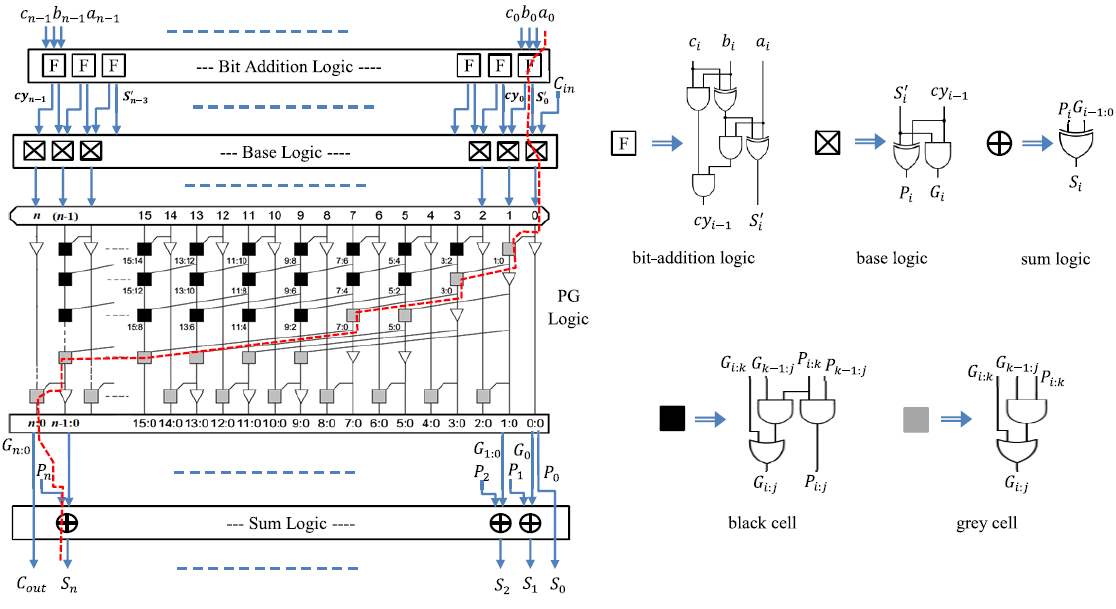High-Speed Area-Efficient VLSI Architecture of Three-Operand Binary Adder
Also Available Domains Arithmetic Core|Xilinx Vivado
Objective
In this project, a high-speed area-efficient adder technique is proposed to perform the three operands binary addition for efficient computation of modular arithmetic used in cryptography and PRBG applications
Abstract
Three-operand binary adder is the basic functional unit to perform the modular arithmetic in various cryptography and Pseudo Random Bit Generator (PRBG) algorithms and also used in many applications. Carry Save Adder (CS3A) is the widely used technique to perform the three-operand addition.
In carry save adder at final stage uses ripple carry adder which will cause large critical path delay. Moreover, a parallel prefix two-operand adder such as Han-Carlson Adder (HCA) can also be used for three-operand addition that significantly reduces the critical path delay with more area complexity.
Hence, a new high-speed and area-efficient adder architecture is proposed using pre-compute bitwise addition followed by carry prefix computation logic to perform the three-operand binary addition that consumes substantially less area and less delay. The effectiveness of the proposed method is designed using Xilinx ISE 14.7
Keywords: Arithmetic Circuits, Three-operand adder, Carry Save Adder (CSA), Han-Carlson Adder (HCA)
NOTE: Without the concern of our team, please don't submit to the college. This Abstract varies based on student requirements.
Block Diagram

Specifications
Software Requirements:
- Xilinx ISE 14.7
- HDL: Verilog
Hardware Requirements:
- Microsoft® Windows XP
- Intel® Pentium® 4 processor or Pentium 4 equivalent with SSE support
- 512 MB RAM
- 100 MB of available disk space
Learning Outcomes
- Basics of Digital Electronics
- FPGA design Flow
- Introduction to Verilog Coding
- Different modeling styles in Verilog
- Data Flow modeling
- Structural modeling
- Behavioral modeling
- Mixed level modeling
- Introduction to Arithmetic Circuits
- Knowledge on various adders
- Carry save adder
- Parallel prefix adders
- Drawbacks of different adders
- Design of various adders such as CSA, HCA etc..
- How to design High Speed, low power and area efficient adder circuits
- Scope of adders in today’s world
- Applications in real time
- Xilinx ISE 14.7 for design and simulation
- Generation of Netlist
- Solution providing for real time problems
- Project Development Skills:
- Problem Analysis Skills
- Problem Solving Skills
- Logical Skills
- Designing Skills
- Testing Skills
- Debugging Skills
- Presentation Skills
- Thesis Writing Skills


 Paper Publishing
Paper Publishing
